March 28, 2016
Home is where your heart is.
And if you're anything like me, your home is also one place – aside from gyms, roads and parks – where you probably spend a significant amount of time sweating and sculpting your body. But wouldn't it be a real pity if you were turning your body into a chemical wasteland in the process?
The fact is, you can't do much about the diesel exhaust getting piped out the backside of the trucks that drive besides the roads you run or bicycle on, the chemical-laden disinfectants that gets sprayed on the treadmills and, sadly enough as I write about in my article on Four Scary Facts About Gyms, even the exercise equipment at the gym, or the pesticides and herbicides that litter the grass at a public park.
However, in the same way that you have complete control of what kind of foods and chemicals you put into your body, you do have control over how healthy – or unhealthy – your home is. You also have control over how well equipped your body is to handle potentially toxic environments, such as gyms, roads and parks. And in today's article, fully updated and adapted from the original chapter I wrote in my book Beyond Training, you're going to learn exactly how…
As usual, leave your questions, comments and feedback below this article – and also let me know if there's anything you'd like to see addressed that I may have left out!
——————————————-
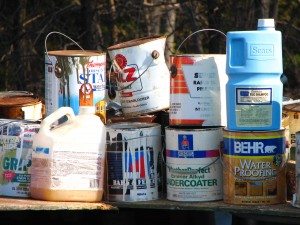 Why You Need To Protect Your Body
Why You Need To Protect Your Body
How much consideration have you given to the toxins, pollutants, chemicals, heavy metals and hidden killers that aren't inside your body, but are outside your body?
In other words…
When you're cranking out push-ups in your living room, have you ever thought about what kind of carpet you're shoving your nose into?
When you're doing the cold thermogenesis showers (or the 21 Day Cold Shower Challenge I'm organizing), have you ever considered what compounds your skin might be soaking up from the water?
And as you're sitting here right now reading this article, do you know how many spectrums of electromagnetic frequencies are bombarding and radiating your body from smartphones, e-readers, and computers?
The fact is, the average home contains 500-1,000 chemicals, ten times more electrical pollution than 40 years ago and an untold number of mold, mites, fungi, spores, pollen and other “bioaerosols”. Most of this stuff you are completely unable to see, smell or taste, but just because you can't sense it doesn't mean it won't leave you struggling with brain fog, an afternoon headache, a crappy night's sleep, or a horrible workout.
So let's learn what you can do about it.
——————————————-
Mycotoxins are toxic compounds produced by various species of mold. Among a variety of other health issues, they can cause asthma and breathing issues, cancer, cardiovascular disease, altered kidney and liver function, disrupted sleep, stunted muscle recovery, miscarriage, and a bad case of “fuzzy brain”(27). At my “Become Superhuman” event several years ago, a guy named Dave Asprey stepped onto stage and revealed a host of mycotoxins and molds in foods that are commonly perceived to be healthy, citing the website Mycotoxins.com as a fantastic tool for discovering whether or not a food you commonly eat may be tainted with dead organic matter that is deleteriously affecting your health and performance.
In a nutshell, unless you completely trust the source, I’d seriously reconsider blue cheese and other “moldy” foods in your diet. Here’s a few biggies: sour cream, buttermilk and sour milk; cured, pickled and smoked meats and fish; prepackaged meats, like lunch meats, salami, smoked fish and some sardines; commercial, store-bought pickles, olives, capers, salad dressing or ketchup; vinegar and soy sauce; the average hotel room coffee and yes, even leftovers that have been in your refrigerator for several days. I’m not saying you can live your life with complete abstinence from these food groups, but you should go out of your way to avoid them whenever possible.
But mycotoxins aren’t just found in food. By getting a test such an ERMI (Environmental Relative Moldiness Index) from a licensed contractor (I don't recommend this as a DIY project), you may find that your house has toxic mold which produces bacteria which can often be more deadly than that you find in food.
Within 24-48 hours of development of moisture in an area of your house, mold can form, chomp down and multiply on just about any part of your home which mold considers to be a food source, including dust, wood, paint, paper, cotton or oil, and modern building materials like drywall.
To avoid mold formation and exposure, I recommend you:
-Keep house dust to a minimum. Mop all surfaces at least once a week. Use a vacuum cleaner with a HEPA filter (listen to this to get the one I use) for your carpets. HEPA-filter vacuums capture the widest range of particles and and potential allergens. Also consider installing a Hepa air filter in your home and office (I use AirDoctor)
-Use a dehumidifier to keep the humidity in mold-prone rooms such as basement bathrooms low.
-Operate an oscillating fan in the bathroom after showering and fix or caulk any leaks as soon as possible.
-Regularly clean surfaces where mold usually grows – around showers and tubs and beneath sinks.
-Be conscious of toxins in carpeting, especially in products made from synthetic materials. Use natural fiber wool & cotton rugs. If you really want to take things to the next level, replace your wall-to-wall carpeting with hardwood floors, all natural linoleum or ceramic tiles, using nontoxic glues, adhesives, stains or sealers for installation.
-Seal or replace particleboard walls, floors or cabinets, which often contain formaldehyde, which emits unhealthy fumes. Avoid any synthetic, strong-smelling plywood, fiberglass, fiberboard and paneling.
So let's say you want to know if you actually have been exposed to mold?
In the US, you can get tests from a company called “EHAP Labs“, and similar tests exist internationally. Or you can simply pay attention to symptoms. If you move into a new house or apartment or you don't change anything in your diet but you suddenly begin to experience allergy-like symptoms such as asthma and congestion, frequent sickness, headaches, joint pain, brain fog and other issues, you should suspect mold (18).
You can also get tested for mold allergies to everything from candida to penicillin using a skin prick test, which uses watered-down extracts of mold allergens to check your reactions. A little drop of the allergen-containing liquid is applied to the skin of your arm or back and is then pushed into your skin with a little puncture or scratch. If a bump develops on any of the spots, it indicates a likely allergy to that substance.
One simple test you can order at home from a company such as DirectLabs is a blood mold profile. For this test, blood and sends it to the lab where it's exposed to various mold allergens. Then the blood is checked for the presence of the antibody immunoglobulin E, which is what your immune system produces in an allergic reaction. If it's there, you could be allergic to the mold you're being tested for. Below are sample results of what a blood mold profile test looks like:
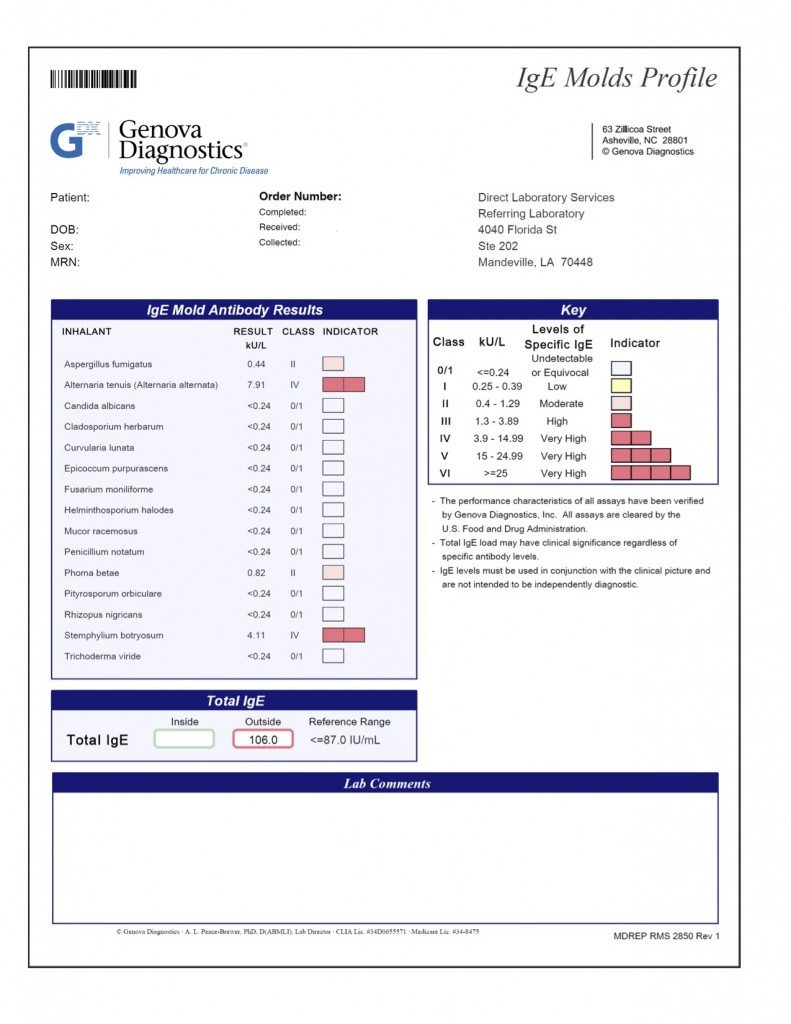 If you do get exposed, suspect you have a mold issue, or take a blood mold test and discover high levels of mold allergens in your bloodstream, I'd recommend you go back to detox article and follow the detox instructions there (two especially potent supplements in the case of mold exposure are liposomal glutathione and oil of oregano), but to really get to the best resources on symptoms, treatment and remediation, I'd visit the website SurvivingMold.com.
If you do get exposed, suspect you have a mold issue, or take a blood mold test and discover high levels of mold allergens in your bloodstream, I'd recommend you go back to detox article and follow the detox instructions there (two especially potent supplements in the case of mold exposure are liposomal glutathione and oil of oregano), but to really get to the best resources on symptoms, treatment and remediation, I'd visit the website SurvivingMold.com.
Finally, if the laundry list of potentially mold-containing foods makes you take a big gulp and get extremely nervous or stressed about your diet, I'd recommend you do something as simple as a “Coca pulse test” after you eat a suspect meal that is a frequent staple in your diet. I discuss this test in detail in a podcast on heart rate variability testing, but it basically involves using a phone app such as the NatureBeat to track your foods, and record an increased heart rate of 5 or more beats in response to a food you've consumed which may be damaging to your nervous system. A positive Coca pulse test can indicate an allergy, or it can also indicate a potential mycotoxin on the food you've consumed. In plain terms, it indicates whether your body goes into “fight-and-flight mode” after eating – which would not be a good sign!
Need more resources? Two good books for discovering how to “de-mold” your house are My House Is Killing Me! and The Mold Survival Guide.
——————————————-
2) EMF
There's a reason I unplug my wireless router at night before I go to bed or whenever I'm doing a home workout anywhere near my office, never bring my cell phone near my ear, don't use or touch a microwave and even avoid heading out on long bike rides or runs with my phone in anything except airplane mode.
The United State alone is wired with half a million miles of high voltage power lines, and for wireless communication we depend on over a half million microwave links. We also have tens of millions of broadcasting transmitters flood our airwaves, use over 35 million electromagnetic devices (increasing at an exponential rate) and plant ourselves in front of hundreds of millions of video and television screens.
 EMF (electromagnetic frequency) radiation is the by-product of this explosion of electronic technology, and is basically a form of environmental pollution from this radiation emitted by millions of domestic appliances, military installations, industrial machines, computers, broadcast and communications transmitters and all other electrically powered devices (28). This radiation can cause headaches, vision problems, anxiety, irritability, depression, nausea, fatigue, disturbed sleep, poor physical performance and loss of drive.
EMF (electromagnetic frequency) radiation is the by-product of this explosion of electronic technology, and is basically a form of environmental pollution from this radiation emitted by millions of domestic appliances, military installations, industrial machines, computers, broadcast and communications transmitters and all other electrically powered devices (28). This radiation can cause headaches, vision problems, anxiety, irritability, depression, nausea, fatigue, disturbed sleep, poor physical performance and loss of drive.
Even worse, all metallic objects, including electrical circuits, telephone wiring, water and gas pipes, and even the metal objects we carry on our bodies such as keys, watches, and jewelry can act as antennae which collect and magnify these energy waves, creating a compounding effect that significantly alters the natural balance of our body’s biochemical energy patterns.
When you're constantly bombarded in this manner by by EMF waves, it can not only distort your internal cellular communications, but it can also “entrain” your body. Entrainment, also known as sympathetic resonance, is the tendency of an object to vibrate at the same frequency as an external stimulus. It's why earthing and grounding discussed in the recovery and stress-fighting chapters works so well. But although the frequencies used in earthing or grounding take advantage of the natural frequency of the planet earth, when you become entrained to any disruptive external frequency – such as the frequency emitted by your wireless router – you can lose the integrity of your intrinsic frequencies (e.g. the natural vibration of your cells), which can degrade physical and mental performance and create huge potential for some serious downstream health issues (15).
I'll admit that a direct cause:effect relationship between electromagnetic radiation and illness has been difficult to prove, but the number of supportive studies continues to increase. To jumpstart your grasp of the seriousness of this issue, and to get the nitty-gritty details on protecting your home and body against the ravages of EMF, I recommend you read the book ”Zapped: Why Your Cell Phone Shouldn’t Be Your Alarm Clock and 1,268 Ways to Outsmart the Hazards of Electronic Pollution” and the book ”Disconnect: Truth About Cell Phone Radiation“.
In the meantime, here's a quick, practical guide to jump-start your EMF radiation protection.
-Watch my video on 7 ways to get rid of electrical pollution in your office.
-Unplug your wireless router or switch it off wireless mode when you're not using it.
-Limit artificial light radiation by installing low blue light bulbs in your home (I use the sleepy time bulbs by the company “Lighting Science“), putting a blue light blocker screen on your computer and using blue-light blocking glasses such as Swannies.
-Use dirty electricity filters in main rooms of house. I personally use and recommend Greenwave filters.
-Use an airtube headset on phone (I recommend the “airtubes” by Aircom) and/or only use the speaker setting when talking on your phone.
-Keep your cell phone or laptop several inches away from your skin whenever possible, and put your cell phone on airplane mode if you need to put it in your pocket or near your head while sleeping or exercising.
-If you need to place an electronic device in your lap, use an EMF blocking pad such as a HARApad to block radiation.
-Avoid using your cell phone when the signal is weak (this amplifies EMF) and use an anti-EMF case for your smartphone.
If you do everything listed above, you'll be well on your way to a very high amount of EMF protection, but if you really want to geek out on EMF protection or do a thorough test of EMF levels in your home, then visit the website LessEMF.com, where you'll find a ton of additional equipment for EMF-proofing your home. Another excellent resource is EMFCenter.com, where you can actually hire a consultant to help you “de-radiate” your home (I interview Dr. Michael Neuert from EMFCenter in my Biohack A Health Home book).
——————————————-
3) Water
In my particular hometown (Spokane, Washington) they don't fluoridate the water, and boy, am I ever glad.
Flouride is certainly a crucial compound…in pesticides. That's right: sodium fluoride is a registered insecticide and rodenticide that is used in rat and roach poisons. It is a toxic waste byproduct derived straight from the manufacture of phosphate fertilizers and from the aluminum refining industry, which means it also has a lot of lead as well as other toxic substances in it. But it's cheaper to simply dump fluoride into our water supply than to pay toxic waste disposal fees (1). Unfortunately, this can cause cancer, hip fracture, dental fluorosis, stained teeth, neurological impairment, lower IQ in children, and learning disorders.
Sure, fluoride certainly has a good anti-decay effect when you apply it directly to the tooth itself – but you don't have to swallow the stuff, and frankly when it comes to tooth decay, there is little to no difference between countries with fluoridated water and countries with unfluoridated water. If you really want to dig into the issue with fluoride, listen to this podcast I recorded with Paul Connett, author of the eye-opening book “The Fluoride Deception“, or read book “The Case Against Fluoride“.
 Of course, fluoride isn't the only issue. Since 2004, testing by water utilities has consistently found thousands of pollutants in the tap water we drink on a daily basis. More than half of the chemicals detected are not subject to health or safety regulations and can legally be present in any amount. Unfortunately, at least in America, the federal government has not set a single new drinking water standard since 2001 – and water utilities spend 19 times more on water treatment chemicals every year than the federal government invests in protecting lakes and rivers from water pollution in the first place (2).
Of course, fluoride isn't the only issue. Since 2004, testing by water utilities has consistently found thousands of pollutants in the tap water we drink on a daily basis. More than half of the chemicals detected are not subject to health or safety regulations and can legally be present in any amount. Unfortunately, at least in America, the federal government has not set a single new drinking water standard since 2001 – and water utilities spend 19 times more on water treatment chemicals every year than the federal government invests in protecting lakes and rivers from water pollution in the first place (2).
So what can you do to ensure you're protecting yourself from fluoride and other chemicals in your drinking water, shower water, bathing water and cooking water?
When it comes to filtering your water, there are a couple good options.
Water Filter Option #1: Install a reverse osmosis system for the drinking water in your home. Make sure it has one or more charcoal filters in the system as that will help remove other unwanted substances like chlorine. Unfortunately, when you use a reverse osmosis system, the good minerals such as calcium, magnesium and potassium are filtered out along with the bad minerals like fluoride. Demineralized water is also more acidic. So to make your water healthy with good minerals once again, and to increase alkalinity, you can re-mineralize the water with or take a daily shot of a trace liquid minerals supplement. You can also purchase reverse osmosis water filters that come with a built in remineralizer.
Water Filter Option #2: Use a whole house structured water system. You learned earlier about vibrational frequencies and how they can either be good for your body or bad for your body. A structured water system literally changes the frequency of the water, and allows it to envelop toxins and pollutants that will be able to pass through your body without harming you, while at the same time retaining the mineral quality of the water. I'll admit that when it comes to structured water systems, the science is less sound and slightly more out-on-a-limb, but I personally have used the Greenfield Naturals water system for two years, have had urinary porphyrin tests and Spectracell analysis for metals, chemicals and other toxins and have been shown to be perfectly clean. Full disclosure: my father Gary Greenfield actually owns Greenfield Naturals, a domestic and international distributor of structured water filters, and sells these systems to large agricultural enterprises to improve the health of their livestock. He also offers any of my clients a 15% discount code “friendofben” at http://www.GreenfieldNaturals.com.
If whichever filter you choose is not a whole house filtration system, but simply an “under-the-kitchen-counter” unit or a simple drinking water filter like a Britta, then I highly recommend you also install a KDF showerhead/bathhead filter in your bath and shower. A single 20-minute shower will expose you to a greater absorption of chlorine, fluoride, and any other chemicals that are in your water than 5 days’ worth of your drinking water!
Finally, if you have been exposed to fluoride and unfiltered water for long periods of time and have been using fluoride filled toothpaste and other fluoride-filled personal care products, then pay attention to what you'll learn in the next section on chlorine so that you can help your body recover, undo the damage, and rebuild itself. Dr. David Getoff also has an excellent presentation on fluoride detoxification.
—————————————–
Of course, some of us don't just drink chlorine in our water – we also soak it up through our skin during workouts while we also breathe in chloramines, the nasty byproducts that form when chlorine reacts with organic matter such as dead skin cells.
I don't know about you, but I personally swim 2-4 times per week, and during the fall and winter, it's not in the river or lake near my house, but instead in a chlorinated pool.
How much chlorine are you personally exposed to? If you’re a swimmer or triathlete or someone who hits the pool or hot tub at your gym often, then it’s probably quite a bit. If you're not a swimmer, you’re still getting significant chlorination from simply showering or bathing in your city’s water if you're not using the filtration methods I just described.
In the podcast “How To Reduce The Risk From Swimming in Chlorinated Pools and Drinking Chlorinated Water”, I interviewed the same Dr. David Getoff mentioned earlier. During the interview, which I'd highly recommend you listen to for good details, Dr. Getoff explains the cell wall damage and internal soft tissue damage that chlorine creates, along with the auto-immune and allergy issues that are commonly aggravated by breathing and soaking in chlorinated water (19).
The recommendations generated during the show to mitigate the damages of chlorine are (especially for days that you're in a chlorinated pool or hot tub) to get the following into your body:
1) 2-5 daily grams of Vitamin C (for more on that listen to this audio Vitamin C Lecture Part 1 and Vitamin C Lecture Part 2)
2) 2000-4000IU of Vitamin D/Vitamin K blend
3) 10-20iu of a natural source of Vitamin E such as d-alpha-tocopherol (I recommend SuperEssentials fish oil for this)
4) a serving of a full spectrum antioxidant such as Life Shotz.
Unfortunately, most soaps and shampoos that are designed to strip chlorine from your skin and hair are laden with many of the endocrine disruptors and dangerous personal care product chemicals you'll learn about later in this chapter. There is one product called SwimSpray, which is a natural, Vitamin-C based spray that will remove chlorine odor, but it's not going to stop chlorine from getting absorbed into your body. So the best thing you can do is equip yourself internally to handle the ravages of chlorine. If you need to test your antioxidant levels to see how well-equipped your body is to fight chlorine damage, I recommend a Metametrix ION Panel at DirectLabs.
Finally, if you have the luxury of a home pool, then treat it with a healthy alternative to chlorine, such as a combination of natural pool minerals combined with structured water.
—————————————–
5) Household Cleaning Chemicals
From toilet bowl cleaners to laundry detergent, synthetic, chemical-based cleaners are an enormous source of health issues and and environmental pollution (8). For example:
-Tide laundry detergent has high levels of 1,4-Dioxane, a carcinogenic contaminant…
-Most fabric softeners are filled with synthetic fragrances that cause acute effects such as respiratory irritation, headaches and auto-immune reactions…
-All-purpose cleaners contain the sudsing agents diethanolamine (DEA) and triethanolamine (TEA). When these substances come into contact with nitrites in the environment or your body and mouth, they react to form nitrosamines carcinogens…
In contrast, take a look at the photo below. You'll see three basic ingredients: lemons, baking soda and white vinegar. From disinfectants to window cleaners, in our house, these three ingredients form the crux of our household cleaning supplies.
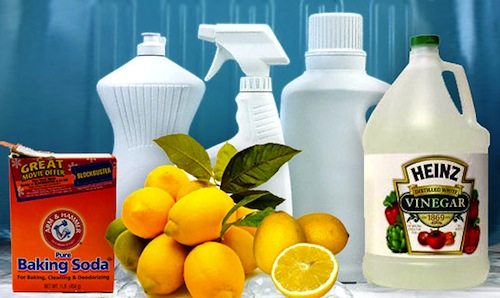
There are many inexpensive, easy-to-use natural alternatives which can safely be used in place of commercial household products. Here's list of common, natural and safe products which can be used alone or in combination for a variety of household cleaning applications.
-Baking Soda – cleans and deodorizes.
-Soap – unscented natural soap in liquid form, flakes, powders or bars is biodegradable and will clean just about anything. We get most of our soap-making goods from Mountain Rose Herbs.
Lemon – a natural acid that is effective against most household bacteria.
Borax – Despite it's “scary” name, Borax is simply sodium borate. It cleans, deodorizes, disinfects, softens water, cleans wallpaper, and is good for cleaning painted walls and floors.
Washing Soda – also known as “SAL Soda”, this is sodium carbonate decahydrate, a natural mineral. It cuts grease, removes stains, softens water, cleans wall, tiles, sinks and tubs.
White Vinegar – cuts grease, removes mildew, odors, some stains and removes wax build-up.
Cornstarch – can be used to clean windows, polish furniture, shampoo carpets and rugs.
Essential oils – where do I start? There are dozens of options but we stick to three when we need to kill bacteria or clean our bodies or our kitchen counters: oregano, thieves and lemon. You can read up on them here.
So how can you use the natural ingredients above? Here are a few examples (and you can find many more thorough instructions for anything you'd ever need at EarthEasy.com, which is an organic living website owned by a friend of mine):
-Disinfectant: Mix 2 teaspoons borax, 4 tablespoons vinegar and 3 cups hot water.
-Carpet Stains: Carpet stains: Mix equal parts white vinegar and water in a spray bottle. Spray directly on stain, let sit for several minutes, and clean with a brush or sponge using warm soapy water.
-Laundry Detergent: Mix 1 cup Ivory soap, with 1/2 cup washing soda and 1/2 cup borax.
Of course, if you don't have time, you don't have to create your own cleaning supplies. A growing number of commercial non-toxic home cleaning products are also available. From kitty litter to diapers (those are technically a cleaning supply, right?), I introduce some commonly found storebought resources in my blog post “How Safe Is Your House From Being A Chemical Wasteland?“, including:
–Healthy Pet Foods Here’s the Scoop! Natural Unscented Clay Clumping Litter
–Bon Ami Polishing Cleanser, No Chlorine, Perfume or Dye
–Seventh Generation Free and Clear Dishwashing Detergent
–Seventh Generation Free and Clear Natural Dish Liquid
–Seventh Generation Chlorine-Free Diapers
There are many other safe products you can find on websites such as OrganicConsumers.org. My wife and I have several webinars inside the BenGreenfieldFitness Inner Circle which teach you how to make your own cleaning products, but the information you've just learned will give you a very good start.
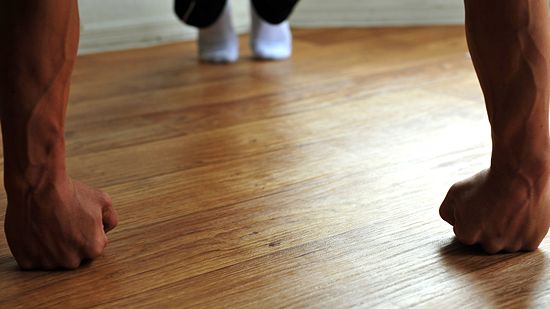 No discussion of cleaning chemicals would be complete without warning you about carpets, furniture, mattresses flooring, and other surfaces. When any of these items (especially carpet or area rugs) give off that new carpet smell, that means they're off-gassing.
No discussion of cleaning chemicals would be complete without warning you about carpets, furniture, mattresses flooring, and other surfaces. When any of these items (especially carpet or area rugs) give off that new carpet smell, that means they're off-gassing.
Off-gassing is the evaporation of chemicals from any material (23). Furniture, plastics, vinyl products, paint, new cars, clothing, cosmetics, water bottles, carpet, and mattresses do it. Off-gassing materials emit volatile organic compounds (VOCs) and small particulate substances throughout the entire life of the material – and carpet is a major offender.
Synthetic carpets are made from nylon fibers with a polypropylene backing. Of the chemicals released from carpet, most notable are styrene and 4-phenylcyclohexane (4-PC), both of which come from the latex backing used on 95% of all carpets. So that “new carpet” smell is the odor of 4-PC, which is an eye and respiratory-tract irritant that can seriously mess up your central nervous system. If that's not bad enough, the adhesive used to attached the carpet to the floor typically contains benzene and toluene, some of the most harmful VOCs (29).
Ideally, a new carpet should be aired before installation, but if that’s not possible, keep any carpeted room extremely well ventilated. Besides headaches, nausea, dizziness, shortness of breath, and asthmatic reactions, here’s how he tells if carpet is giving off gas:
1. Take a clean, fragrance-free paper towel and fold it in half twice.
2. Place it on a section on the carpet and cover it with aluminum foil secured with tape.
3. After 24 hours, fold the towel inside the foil quickly.
4. Then go outside and unwrap it just enough to take a whiff.
5. If it stinks, your carpet is giving off gas.
You should also avoid stain-guarded clothing, furniture and carpets and be conscious of toxins in carpeting and other flooring, especially anything made from synthetic materials. Use natural fiber wool & cotton carpets, rugs, mattresses and furniture when possible, and if you really want to take massive action, replace your wall-to-wall carpeting with hardwood floors, all natural linoleum or ceramic tiles – using nontoxic glues, adhesives, stains or sealers for installation.
—————————————
6) Plastics
I go out of my way to avoid plastic by investing in items such as Pyrex BPA-free glass containers and glass canning jars. I also only use PCB-free water bottles when cycling or hydrating during a workout (I prefer the Specialized Purist) and avoid heating, microwaving or even letting sit in a hot car any type of plastic that I'll potentially be eating food or drinking from, especially foods that contain oils or fats, which tend to be excellent “carriers” for many of the chemicals in plastic.
The chart below shows how plastics, even many society consider to be “safe plastics”, are not really that safe at all:
In this post-industrial era, I understand it can be nearly impossible to completely eliminate plastic from your life. So I recommend you simply limit your exposure to the worse offenders, which are typically plastic numbers “3”, “6” and “7”, and follow these simple rules.
1) Limit use of plastic bottles. Bottled water is not extremely harmful in small amounts, but BPA exposure can be an issue with frequent or prolonged use. BPA, or Bisphenol A, is linked to cancer and phtalates, both of which can cause hormonal and neural damage. One report from the CDC found BPA in 92.6% of adults (4), but the good news is that another study found that when you remove BPA containing items from your diet for just three days, you can reduce your BPA levels by around 66%. Use glass bottles, BPA-free bottles, or glass jars to transport and drink your water (21).
2) Be aware of other common sources of BPA. Besides plastic bottles, canned food and shopping receipts are also significant sources of BPA. You should also avoid plastic food packaging and plastic containers when you can – and never heat foods near these items. Choose baby bottles made from glass or BPA-free plastic. If you have children, avoid vinyl pacifiers for your baby and especially stay away from children's toys marked with a “3” or “PVC.”
3) Replace your plastic shower curtains. Use natural cotton or nylon curtains such as Bean Products Pure Cotton Shower Curtain or Excell Home Fashions Ultimate Nylon Shower Curtain or Liner.
4) You should avoid non stick pans, pots, bakeware and utensils, since the Teflon coating contains perfluorinated chemicals (PFC's) very similar to the chemicals leached from plastic. Whatever you cook on, you wind up eating. We primarily use cast iron cookware
5) Rather than dry cleaning, use wet cleaning if that's an option near your home. Tell your dry cleaner not to use the plastic wrap or remove it as soon as possible, since the plastic traps the dry cleaning chemicals on clothes and in your closet. Let your dry cleaning air out (preferably outside) before you put it away.
Once you become aware of the dangers of plastics, you'll begin to notice them all over your home. But through awareness and gradual removal, it can be simple to get most of them out of your life. Once again – if you have been exposed for a long time, educate yourself on detoxification.
—————————————

7) Pesticides & Herbicides
I admit: I don't eat organic, 100% pesticide-free all the time.
Sometimes I mess up and end up with one of the “Dirty Dozen” pesticide-laden produce items (see right, or visit EWG.org for a constantly updated list). Usually it's when I'm at a backyard barbecue or a friend's home for dinner and that spinach salad or handful of cherries just looks so good.
In a situation like this, I simply pop some activated charcoal capsules and take liposomal glutathione when I get home.
But the majority of the time, I buy organic produce, and when I don't, I use a simple vinegar-cleansing trick I'll tell you about shortly.
Many people seem to feel just fine when they eat pesticide-laden produce. This is because unlike highly noticeable issues such as mold and carpet, you won't necessarily feel like crap immediately after pesticide exposure. In fact, the biggest danger from pesticides is not from the immediate effects, but the harm that comes long after exposure or from repeated, low-dose exposure.
Recent data collected by the EPA reports that in the U.S. alone, approximately 5 billion pounds of active pesticide ingredients are applied to our foods annually. That's a tremendous amount of poisons entering our bodies, and sure enough, a 2002 University of Washington study found that 109 out of 110 urban and suburban children had pesticides in their urine samples.
As you would probably guess, food grown on certified organic farms contains significantly less pesticide residue than food grown with synthetic pesticides. That may seem obvious, but the evidence for this fact has only been available since 2002, when research proved that children fed organic food have lower residues of certain pesticides in their bodies than children fed conventionally grown food.
So buy certified organic produce. And if you really want to make an educated decision and fill your body with the most nourishing and least damaging produce, I recommend you go buy the book Rich Food, Poor Food.
In this grocery shopping guide, Mira and Jayson Calton have an excellent list of the “Fab 14” and the “Terrible 20” – which are simple resources to show which produce items tend to be most laden with not only harmful pesticides, but also GMOs, chemical fertilizers, various synthetic substances, sewage and irradiation.
I'd highly recommend you buy their book to get into the nitty-gritty details, or to get a handy wallet guide like the one below, which allows you to reduce your pesticide exposure by 80% and avoid GMO produce 100% of the time.

And for that simple vinegar trick I mentioned for non-organic produce? Any basic white vinegar will do, and you already plan on having that around for a natural cleaning supply, right? Simply mix a solution of 10 percent vinegar to 90 percent water as a bath in your kitchen sink, and then briefly place your non-organic vegetables or fruit in the solution, swish them around, and rinse thoroughly in plain water.
Of course, you also need to watch out for the pesticides and herbicides hanging around in your yard. After all, the average suburban lawn soaks up 10 times as much chemical pesticide per acre than conventional farmland, with over 70 million tons of fertilizers and pesticides are applied to residential lawns and gardens annually!
I'll admit, I'm not a huge fan of lawns. At our previous house, we actually dug up nearly our entire 1.2 acre yard and just replaced it with one big muddy, dirty vegetable garden. But if you do want that classy expanse of green grass, the only way to reduce dependence on chemical lawn fertilizers is to develop a healthy lawn that is naturally resistant to weeds, insects and disease. You can do this by:
1. Improving the soil.
You can get a lawn pH tester for a few bucks on Amazon. When you test, it should read between 6.5 and 7.0, which is slightly acidic. Soil that is too acidic will need a sprinkling of lime and soil that is not acidic enough will need a sprinkling of sulfur.
2. Choosing a local grass.
Grasses vary in the type of climate they prefer, the amount of water and nutrients required, shade tolerance and the degree of wear they can withstand. Ask your local garden center to recommend grass which is best adapted to your area.
3. Mowing often, but not too short.
Giving your lawn a “marine cut” is not the best idea because surface roots become exposed, the soil dries out faster and surface aeration is reduced. As a general rule, don't cut off more than one-third of the grass at any one time and shoot for about 2.5-3.5 inches. In most growing conditions, this means a weekly mow (yes, I hire a guy off Craigslist to mow, as I hate mowing). When your lawn is finished growing for the season, cut it a bit shorter, to about 2 inches. This will minimize the risk of mold buildup during winter.
4. Watering deeply, but not too often
Regular watering encourages your lawn to develop deep root systems which make the lawn hardier and more drought-resistant. But you need to let the lawn dry out before re-watering. Most healthy lawns require only 1 inch of water per week, which is about 15-20 minutes worth of sprinkling once per day, such as the early morning, when less water will be lost to evaporation.
Finally, when you do fertilize use a natural lawn fertilizer. I recommend the Ringer brand, which is basically a mix of certified organic minerals. An excellent resource for more chemical-free yard recommendations is The Organic Lawn Care Manual: A Natural, Low-Maintenance System for a Beautiful, Safe Lawn.
——————————————-
I step into a my basement infrared sauna at least once a week, and usually far more often than that, because saunas have been shown to be an excellent way to release metals through the skin, and because I know that the mere fact that I get exposed to everything from brake dust on the road to metals in airports and airplanes to the occasional sushi binge, I get my fair share of metals.
In the podcast episode “How Hidden Sources Of Heavy Metals Are Destroying Your Health, And What You Can Do About It.“, I talk to Dr. David Minkoff about how metal exposure can cause chronic fatigue, poor mood, disrupted sleep, headaches, low immune system, low hormones, and brain fog.
The biggest culprit for metal exposure is modern dentistry. Even though about 50 percent of dentists in the U.S are now mercury-free, only an estimated 10% of dentists fully understand the health risks associated with dental amalgam – which is toxic mercury, despite what the misleading term “silver filling” might lead you to believe (13).
If you decide you want to pull metal out of your mouth, then you should know that via the process of removing and replacing amalgam “silver” fillings, you can risk acute toxicity from the mercury released during the removal process, and this can cause some serious damage to organs such as your liver and kidney.
Because of this, and other metals that float near and get absorbed into your mouth when you're at the dentist, my family and I only use a holistic dentist. These type of dentists believe that your teeth are an integral part of your body and overall health and do things such as use a cold-water spray to minimize mercury vapors, put a dental dam in your mouth so you don't swallow or inhale any toxins, use a high-volume evacuator near the tooth at all times to evacuate the mercury vapor, wash out your mouth out immediately after any fillings have been removed, and use powerful room air purifiers.
The following organizations can help you to find a holistic dentist:
- Consumers for Dental Choice
- International Academy of Biological Dentistry & Medicine (IABDM)
- Dental Amalgam Mercury Solutions (DAMS) E-mail them at: [email protected] or call 651-644-4572 for an information packet
- Huggins Applied Healing You'll need to fill out a form and they will connect with you to find a suitable dentist in your area
- Holistic Dental Association
- International Association of Mercury Safe Dentists
For more education on this topic, read this article at Mercola.com.
Unfortunately, you can get heavy metal exposure in all sorts of sources that go way beyond metal in your mouth. These sources include:
-Smog…
-Car keys…
-Chinese toys…
-Second hand cigarette smoke…
-Pesticides and herbicides…
-Protein powders and dietary supplements…
-”Pristine” water (like my local Lake Coeur D’ Alene) that in fact has high amounts of mining runoff…
-Food stored in metal containers…
-Big fish like tuna and dolphin…
-Nuclear run-off from Japan…
The list goes on and on. You can get tested for heavy metals through a company like DirectLabs, but if you've been exposed to any of the above, you can assume you'd benefit from pulling metals out of your body.
Binding heavy metals and “pulling” them out of your body is called chelation, and many substances will bind heavy metals and remove them from your body (12). The metals generally exit your body via your stool, urine, hair, breath, and sweat. Some forms of chelation are accomplished with drugs such as DMPS, but the web site www.DMPSBackfire.com shows you some of the serious problems that can be caused by conventional chelating drugs.
Chelators bind by way of ionic bonds, which are the attractions between the plus charge of a heavy metal and the minus charge of the chelating molecule. Because of this, chelation has ability to extract precious minerals from your body, so if you want to get heavy metals out of your body, I do not recommend chelation drugs or natural chelation. Instead, I recommend you use natural compounds that can gently draw heavy metals out of your body.
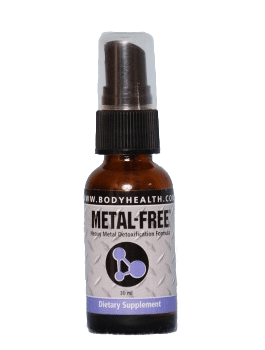 For optimum heavy metal protection, Dr. Minkoff recommends using 6mg of iodine per day, magnesium in supplemental form (around 400-600mg/day, or until you get loose stool), and a algae supplement such as chlorella. But these don't pull the metals out of your body.
For optimum heavy metal protection, Dr. Minkoff recommends using 6mg of iodine per day, magnesium in supplemental form (around 400-600mg/day, or until you get loose stool), and a algae supplement such as chlorella. But these don't pull the metals out of your body.
For actually getting metals out of your body, I highly recommend Metal Free Heavy Metal Detoxification Formula, which is a sublingual spray composed of a unique short protein chain, called a peptide. Peptides are very small and easily absorbed. The way they interact with a heavy metal is to wrap around it in a way that the heavy metal is not free to interfere with or block normal cellular processes (14). This interaction is called “cage binding”. So rather than chelating precious minerals from your body, the spray actually forms a surrounding cage around mercury, arsenic, lead, aluminum, uranium or cadmium. Your body then removes the metal by excreting it in your stool and out of your body.
Metal Free is something I personally use for about 30 days out of each year to ensure that I'm regularly removing metal build-up from my body.
——————————————–
9) Radiation
From the Fukushima disaster in Japan to the average airport security line to radioactive compounds ingested during medical screens, we're constantly bombarded by radiation – and it's an unfortunate fact that a nuclear disaster which occurs thousands of miles away can have implications for you as you sit sipping iced tea in your own backyard.
One problem with radiation is that certain glands and tissues with high amounts of iodine receptors, including your thyroid, prostate, and breast tissue, are extremely sensitive to oxidation and cell damage from radiation, especially when these tissues are low in the nutrient iodine (24). When radioactive iodine (found in most forms of radiation, including all the stuff that gets blown into the atmosphere after a disaster such as Fukushima) gets into areas of your body which have numerous iodine receptors, if these receptors are lacking iodine, then the radioactive iodine latches on and begins ionizing, oxidizing, and harming these tissues. As you can imagine, if the receptors have had adequate dietary exposure to iodine then they are already filled with iodine and do not readily grab the radioactive version of iodine.

The other issue with radiation, as I alluded to above, is that it is highly capable of causing oxidation – in a similar manner that eating high levels of heated vegetable oils or sugars can cause free radical damage – but to a much greater extent.
And here is the basic fact: contrary to popular belief, you simply cannot stop ionizing radiation from entering or actually passing through your body by taking some special nutritional supplement or drug.
This is because radiation exposure is the equivalent of a bunch of tiny bullets passing through your tissues, so complete protection from radiation would basically involve you digging into an underground bunker and getting lead or concrete walls between you and the source of the radiation. Good luck with that.
So rather than running from the radiation, I recommend you simply speed your body's ability to repair damaged tissues and organs, and equip yourself with high amounts of the proper nutrients to counteract the effects of ionizing, oxidizing radiation.
As I discuss in the podcast episode “Natural Ways To Protect Yourself From Radiation“, different forms of anti-oxidants are going to protect you in different ways, so you can't simply take something like high-dose vitamin C or high-dose iodine and call it good. In that particular podcast episode, I answer a question from a Japanese caller who was concerned about radiation exposure from Fukushima, and I recommended the following steps to counteract the effects of radiation (you'll notice that many overlap with my recommendations for a healthy detox).
Daily radiation protection (things you should be doing for general health anyways):
-Oral magnesium in supplemental form (around 400-600mg/day, or until you get loose stool). You can read more here about how magnesium offers strong protective effects against small daily doses of radiation.
-Algae. I eat a handful of organic algae every day and I talk about why in this article. Eat 20-30 bits in the morning and evening, or put into daily smoothie. Also, liberally include sea vegetables in your diet.
–Full spectrum antioxidant such Lifeshotz. All ingredients of Lifeshotz are derived from wild plants, which are some of the most “stressed” biological compounds on the of the planet. When you consume the extract of those wild plants, they pass their natural anti-oxidant properties on to you.
-Additional anti-oxidants from a high quality omega 3, Vitamin D and Vitamin A containing supplement. I recommend SuperEssentials fish oil combined with a good multivitamin.
If acute radiation exposure occurs or you're traveling frequently:
-The Metal Free Heavy Metal Detoxification Formula discussed earlier.
-6mg of nascent iodine per day in a glass of water.
-1-2 servings edible clay per day. Clay can actually draw out stored radioactive compounds from your body, and yes, it literally tastes like eating dirt. I recommend this Edible Earth stuff.
Finally, to learn more about naturally protecting yourself from radiation and the huge problem with radiation exposure in our modern era, I highly recommend you read Dr. Mark Sircus’s book “Nuclear Toxicity Syndrome”.
——————————————
10. Personal Care Products
Ever heard of the “dirty dozen of cosmetics”?
That's right…just like there's a dirty dozen for produce, there are a plethora of ingredients in beauty products that aren't exactly beautiful. In the US, research has shown that a significant portion of the 82,000 ingredients used in personal care products are industrial chemicals, including carcinogens, pesticides, reproductive toxins, and hormone disruptors – including plasticizers, degreasers, and surfactants (10). And many folks are unknowingly slapping, slathering, rubbing, spraying, spritzing and massaging these chemicals onto their skin and hair – both of which readily soak up these chemicals.
For more detailed information on the dirty dozen of cosmetics, you can check out this helpful Cosmetic Dirty Dozen background report, but in the meantime, I recommend you head to your bathroom cupboard, inspect the labels of your personal care products and toss out anything that contains the following twelve ingredients:
1. BHA or BHT: Used mainly in moisturizers and makeup as preservatives. Suspected endocrine disruptors and may cause cancer.
2. Coal tar dyes: Indicated by the word “p-phenylenediamine”, colors listed as “CI” followed by a five digit number, or colors such as “FD&C Blue No. 1” or “Blue 1”. These have potential to cause cancer and may be contaminated with heavy metals toxic to the brain.
3. DEA, MEA or TEA-related ingredients: Used in creamy and foaming products, such as moisturizers and shampoos, these can react to form nitrosamines, which may cause cancer.
4. Dibutyl phthalate: Used as a plasticizer in some nail care products. Suspected endocrine disrupter and reproductive toxicant.
5. Formaldehyde-releasing preservatives: Look for DMDM hydantoin, diazolidinyl urea, imidazolidinyl urea, methenamine and quarternium-15. Used in a variety of cosmetics. Slowly release small amounts of formaldehyde, which causes cancer.
6. Parabens: Used in a variety of cosmetics as preservatives. Suspected endocrine disrupters and may interfere with male reproductive functions.
7. Parfum (a.k.a. fragrance): Any mixture of fragrance ingredients used in a variety of cosmetics – even in products advertised as “unscented.” Some fragrance ingredients can trigger allergies and asthma. Some linked to cancer and neurotoxicity.
8. PEG compounds: Used in many cosmetic cream bases. Can be contaminated with 1,4-dioxane, which may cause cancer. Also look for propylene glycol and other ingredients with the letters “eth” (e.g., polyethylene glycol).
9. Petrolatum: Used in some hair products for shine and as a moisture barrier in some lip balms, lip sticks and moisturizers. This is a petroleum product that can be contaminated with polycyclic aromatic hydrocarbons, which may cause cancer.
10. Siloxanes: Look for ingredients ending in “-siloxane” or “-methicone.” Used in a variety of cosmetics to soften, smooth and moisten. Suspected endocrine disrupter and reproductive toxicant (cyclotetrasiloxane).
11. Sodium laureth sulfate: Used in foaming cosmetics, such as shampoos, cleansers and bubble bath. Can be contaminated with 1,4-dioxane, which may cause cancer. Look also for related chemical sodium lauryl sulfate and other ingredients with the letters “eth” (e.g., sodium laureth sulfate).
12. Triclosan: Used in antibacterial cosmetics, such as toothpastes, cleansers and antiperspirants. Suspected endocrine disrupter and may contribute to antibiotic resistance in bacteria.
Whew!
When I first heard about the dirty dozen, I was tempted to simply shrug and just make sure I continued to do things like use natural deodorant, keep avoiding fluoride in my toothpaste, and continue to avoid using sunscreen unless absolutely necessary.
But last year, I read new research – specifically, the first peer-reviewed assessment of a large number of hormone disruptors and dangerous chemicals in a variety of household products (20).
The research is quite shocking, because it reveals consumer products commonly labeled “green”, “non-toxic” and “healthy” are actually laden with dangerous chemicals. And these are products that health-conscious consumers commonly buy and bring into our homes, our kitchens, our bathrooms, our beds, and our bodies – including air fresheners, dryer sheets, shampoo, bar soap, floor cleaner, sunscreen and toothpaste.
So I've personally switched to following a basic rule that may seem silly at first glance, but that seems pretty safe to me:
If you can't eat it without getting seriously sick, don't use it as a personal care product.
That's right – your skin is a mouth, and slathering chemicals on it is pretty dang close to the equivalent of swallowing the stuff. Sure, you might get a slight tummy ache if you literally do eat some of the natural products below, but they're not going to kill you or give you cancer like some of the items that may be in your cupboard right now.
Based on this rule, I'm going to tell you exactly what I use on my own skin next week, because I've been doing a ton of research on this lately…but in the meantime, for the rest of your body parts, like your hair and your teeth:
-Hair Styling: Nature's Blessing Hair Pomade – ingredients are Nettle,Rosemary,Sage,Peppermint, Thyme, Alfalfa, Pure Virgin Olive Oil, Pure Coconut Oil, Sage Oil, Rosemary Oil, Bergamont Oil, Chlorophyll (from nettle and spinach), and Pure Mineral Jelly. Other good hair products for shampooing and styling include Acure Organics and Yarok Hair
-Soap: Dr. Bronners Magic Soaps Unscented Baby-Mild Pure Castile Soap – ingredients are Water, Saponified Organic Coconut, Organic Palm and Organic Olive Oil, Organic Hemp Oil, Organic Jojoba Oil, Citric Acid, and Vitamin E. Many of the same skin care product manufacturers I mentioned earlier also make soap.
-Toothpaste: Dental Herb Company Tooth and Gum Paste – ingredients are Oil of Red Thyme, Cinnamon Bark, Eucalyptus, Lavender, Peppermint, Echinachea, Gotu Kola and Green Tea Extract. I haven't found anything that holds a candle to this stuff, although I do occasionally use activated charcoal tooth powder for whitening.
-Shaving gel: Dr. Bronner’s Magic Shaving Gel – ingredients are Organic Sucrose, Organic White Grape Juice, Organic Coconut Oil, Potassium Hydroxide, Organic Olive Oil* Organic Shikakai Powder, Organic Hemp Oil, Organic Jojoba Oil, Organic Corn Starch, Organic Lemongrass Oil, Organic Lemon Oil, Organic Lime Oil, Citric Acid, Tocopherol. Other good options are Pacific Natural Shaving Cream or natural shea butter bars.
-Sunscreen: Badger Balm – ingredients are Zinc Oxide, Organic Sunflower Oil, Organic Extra Virgin Olive oil, Organic Beeswax, Organic Jojoba, Organic Shea Butter, Organic Cocoa Butter, natural Vitamin E and essential oils. Other good sunscreens are Raw Elements Eco Formula, Kabana Skincare and Mexitan.
–Cologne: Zen for Men Cypress Yuzu Spray Cologne by Enchanted Meadow – there are other good scents out there, but all Enchanted Meadow products are derived from safe ingredients and essential oils such as Vitamin E, Sweet Almond, Avocado, Jojoba & other Essential Oils, plus extracts of Aloe Vera, Rosemary & Chamomile. This way, you don't always smell like a coconut, olive-oil slathered hippie. Or you can use my trick: all I use for cologne is lavender essential oil, just like the mideival knights used to do. If it's good enough for a knight, it's good enough for me.
Of course, I realize that the personal needs of you ladies may go beyond the simple few items in my own bathroom cabinet. So I bugged my wife to throw in a few additional personal care product choices for you that are 100% natural and organic. Munch away.
Makeup: 100% Pure, BiteBeauty and Josie Maran – these companies use healthy food-based or plant-derived ingredients, like Manuka honey and mango seed oil.
Nail Polish: Scotch Naturals. This is a 100 non-toxic nail polish.
Fragrance: Lavanila or Pacifica Perfume – similar to the men's cologne I use, the bases are all healthy essential oils.
Go ahead and compare any of the items above to ingredients of personal care products that might currently be lying around your house. Notice a difference? I promise plenty more about this topic in next week's article, along with exactly what I use for skin wrinkles, anti-aging, skin glow, etc.
——————————————
Summary
Perhaps your head is spinning with all your newfound knowledge about the dizzying array steps you can take to maximize your health and your performance. But don't let that stress you out. Start with the small steps. Little things like:
-Replacing your regular water bottles with PCB-free bottles…
-Gradually shifting to more natural personal care products…
-Starting to become aware of when you're exposing your body to EMF, and minimizing exposure when you can…
-Listening to your body and simply becoming aware of synthetic smelling or synthetic tasting items….
-Equipping your body with what it needs internally to fight external stressors…
Ultimately, you should think about how you can live in as simple and ancestral a manner while still taking advantage of post-industrial comforts such as computers, teeth whitening and swimming pools. You're now well-equipped with the knowledge to make the right decisions.
Leave your questions, comments and feedback (or your own tips) below, and stay tuned next week for exactly what you should slather on your skin, and the new anti-aging strategies and serums I use for my own skin.
——————————-
References
1. Aigueperse, Jean; Mollard, Paul; Devilliers, Didier; Chemla, Marius; Faron, Robert; Romano, Renée; Cuer, Jean Pierre (2005), “Fluorine Compounds, Inorganic”, Ullmann's Encyclopedia of Industrial Chemistry, Weinheim: Wiley-VCH, p. 307
2. Basic information about fluoride in drinking water. (2013, July 23). Retrieved from http://water.epa.gov/drink/contaminants/basicinformation/fluoride.cfm
3. Bryson, C. (2004). The fluoride deception. (1st ed.). New York: Seven Stories Press.
4. Calafat AM, Ye X, Wong LY, Reidy JA, Needham LL. Exposure of the U.S. Population to Bisphenol A and 4-tertiary-Octylphenol: 2003–2004. Environ Health Perspect 2008 Jan;116(1):39-44.
5. Calton, M. (2013). Rich food poor food: The ultimate grocery purchasing system (gps. (1st ed.). Malibu, CA: Primal Blueprint Publishing.
6. Connet, P., Beck, J., & Micklem, H. (2010). The case against fluoride: How hazardous waste ended up in our drinking water and the bad science and powerful politics that keep it there. (1st ed.). White River Junction, VT: Chelsea Green Publishing Company.
7. Davis, D. (2010). Disconnect: The truth about cell phone radiation, what the industry is doing to hide it, and how to protect your family. (1st ed.). New York: Penguin Group.
8. Environmental chemical publications. (2013, February 11). Retrieved from http://www.cdc.gov/biomonitoring/biomonitoring_articles.html
9. Environmental Working Group. (2007-2013). Retrieved from http://www.ewg.org/guides/categories/8-Kitchen?gclid=COOQq7bY9bgCFYie4AodggYAvg
10. Environmental Working Group. (n.d.). Skin deep. Retrieved from http://www.ewg.org/skindeep/
11. Gittleman, A. (2011). Zapped: Why your cell phone shouldn't be your alarm clock and 1,268 ways to outsmart the hazards of electronic pollution. (1st ed.). New York: HarperCollins.
12. Greenwood, Norman N.; Earnshaw, Alan (1997). Chemistry of the Elements (2nd ed.). Butterworth–Heinemann.
13. Hoffman, J. (2011). Dental amalgams and heavy metal toxicity. Retrieved from http://jordanhoffmanacupuncture.com/articles/mercury.htm
14. Kang, H. (2012). Developing an antibody-binding protein cage as a molecular recognition drug modular nanoplatform. Biomaterials, 33(21), 5423-30.
15. Khalil, A. (2013). Assessment of oxidant/antioxidant status in saliva of cell phone users. Electromagn Bio Med, June(13)
16. May, J. (2001). My house is killing me. (1st ed.). Baltimore Maryland: Johns Hopkins University Press.
17. May, J. (2004). The mold survival guide. (1st ed.). Baltimore Maryland: Johns Hopkins University Press.
18. Pestka JJ, Yike I, Dearborn DG, Ward MD, Harkema JR (2008). “Stachybotrys chartarum, trichothecene mycotoxins, and damp building-related illness: new insights into a public health enigma”. Toxicol. Sci. 104 (1): 4–26.
19. Public Health Statement: Bromoform & Dibromochloromethane. ATSDR. 2011
20. Robin E. Dodson, Marcia Nishioka, Laurel J. Standley, Laura J. Perovich, Julia Green Brody, Ruthann A. Rudel. Endocrine Disruptors and Asthma-Associated Chemicals in Consumer Products. Environ Health Perspect. 2012 July; 120(7): 935–943. Published online 2012 March 8.
21. Rudel, R. (2011). Food packaging and bisphenol a and bis(2-ethyhexyl) phthalate exposure: Findings from a dietary intervention. Environ Health Perspect, 119(7), 914-20.
22. Sircus, M. (2011, June 3). Magnesium offers strong radiation protection. Retrieved from http://www.naturalnews.com/032596_magnesium_radiation.html
23. Strong, John (1938). Procedures in Experimental Physics. Bradley, IL: Lindsay Publications., Chapter 3
24. Suman, S. (2013). Therapeutic and space radiation exposure of mouse brain causes impaired dna repair response and premature senescence by chronic oxidant production. Aging (Albany, NY), August(6)
25. Suzuki, D. (2010, October). The “dirty dozen” ingredients investigated in the davidsuzuki foundation survey of chemicals in cosmetics. Retrieved from http://www.davidsuzuki.org/issues/downloads/Dirty-dozen-backgrounder.pdf
26. Tukey, P. The organic lawn care manual: A natural, low-maintenance system for a beautiful, safe lawn. New York: Storey Publishing.
27. Turner NW, Subrahmanyam S, Piletsky SA (2009). “Analytical methods for determination of mycotoxins: a review”. Anal. Chim. Acta 632 (2): 168–80
28. U. A. Bakshi, A. P. Godse (2009). Basic Electronics Engineering. Technical Publications. pp. 8–10.
29. Wolkoff, P., Wilkins, C. K., Clausen, P. A., & Nielsen, G. D. (2006). Organic compounds in office environments — sensory irritation, odor, measurements and the role of reactive chemistry. Indoor Air, 16(1), 7-19.




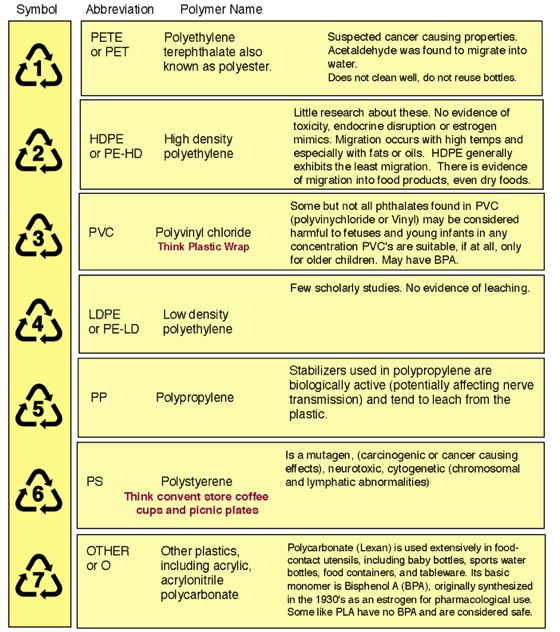














Are there any EU “replacements” for products you mention? For example, Lighting Science is only US and no one ships it from the EU.
Hi Ben, what a great post thank you. My partner is currently considering to start with sous vide but I dont really like the idea of buying plastic (bpa/ea free) nor sillicone for that matter when I got rid off of almost all the plastics around the house and turned it into eco friendly and reusable options (glass, cardboard etc). Is it possible to use glass jars for this type of cooking? Or how else would you recommend cooking meat a similar way sous vide retains all the meats goodness, nutritions and juices. I am just not happy with “safe enough” use of plastic bags for this lenght of cooking sous vide uses. Thank you for your reply in advance, Alena
Hi,
Just wondering if you have any information/experience with non-activated charcoal such as birch charcoal or charcoal c60, both of which I believe can be taken as a dietary supplement as they don’t bind to nutrients as activated charcoal does?
Thanks,
Rob
Which mouthwash do you recommend?
Currently using Tom’s line of these hygiene products + Garnier Fructis paraben-free shampoo.
I would look at some of the alternatives (like coconut oil) that I go over in this podcast: https://bengreenfieldfitness.com/podcast/biohacki…
Great information! You covered pretty much every basic personal care product for men and women but you did not mention a shampoo that you or your wife use. I was wondering about that. Could you please let me/us know? Thank you.
Varies, but right now anything from Acure or Yarok, plus the Kion Serum after. https://getkion.com/shop/body/kion-serum/
Great research, Ben! Loved the article
Thank you..so much info….hepa filter vacuum, and humidifier….ok…got it…
What about the APEC Top Tier UV Ultra-Violet Sterilizer 75 GPD 6 Stage Ultra Safe Reverse Osmosis Drinking Water Filter System (ESSENCE ROES-UV75)? I have some stuff in my drinking water (Long Island NY) that I believe requires some UV to be filtered out.
this is not one that I have used before. I can't vouch for it. I would just make sure you add minerals back into your water as this will take them out.
Question about Nature’s Blessing Pomade. Pure Mineral Jelly? isn’t that a petroleum based ingredient?
The product does have one petroleum component, the sum total of all the other great ingredients out way any health concerns.
If I am purchasing a RO Filter system for my home, most say remineralized with calcium carbonate. Is that the best option? Do you have a specific one you would use or recommend?
yes, this one: https://amzn.to/1PG5ZQt
Great Resource Ben! Very helpful
I have heard of a system to clean pools without the use of any chlorine. All the things your link describes “generate” chlorine. Please find out about this other system without any chlorine and let us know. I think it uses salt of some sort but I don’t remember the details. Thanks.
Hey guys, I am a rather penniless student at the moment and I am trying to reduce the amount of fluoride and chlorine in my system. With the KDF shower head system is it aimed at reducing just chlorine or fluoride as well? The first product I found on the Amazon link that ships to Australia seems to just reduce the presence of chlorine alone. Using something like the KDF shower head and a reverse osmosis filtering system which also remineralizes the drinking water (which fits under the sink) could be a safer as well as economical option? Thank you, as always!
Yep, I would combine a reverse osmosis filter with… Nothing! That is, if it is a whole house filter. If not use the reverse osmosis filter combined with the shower filter.
Hi Ben –
Do you need the KDF shower head system if you have the structured water system? Moving into a new house on city water. My two little kids still take baths, worried about filtering chlorine and nasty stuff from bath water in addition to shower head water.
Will do the RO for drinking water for sure and the whole house filter with carbon filter. Structured water system makes sense too.
Thanks!
Best combo is structured water + RO…if you don't do RO, then yep, add the shower head system…